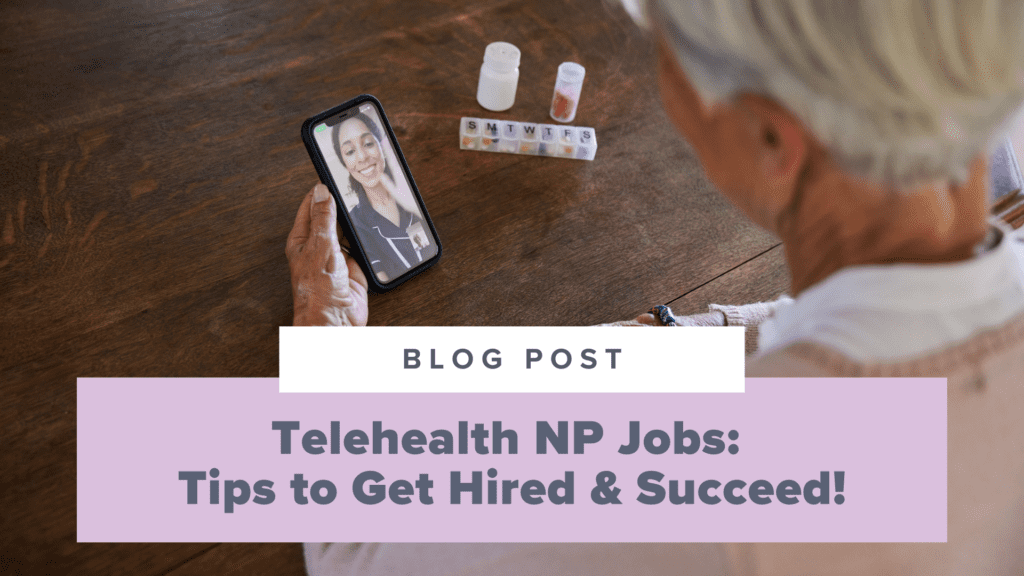A Day in the Life of a Psychiatric Mental Health Nurse Practitioner (PMHNP)
- by
- Feb 19, 2025
- Articles

Are you passionate about helping others and looking to increase access to mental health services in your community? If so, you may find a career as a psychiatric mental health nurse practitioner (PMHNP) rewarding!
To give you a sense of what the role is like, I’ll provide insight into my journey to becoming a PMHNP, what a typical day in the office consists of, and some of the challenges I face in my job. That way you can decide if it sounds like something that could be a good fit for you. Let’s begin!
My Journey to Becoming a Psychiatric Mental Health Nurse Practitioner
My nursing career began in the world of pediatrics, as a bedside nurse caring for children in the pediatric intensive care unit. When the COVID-19 pandemic struck I began to see more children than I ever thought possible coming into the hospital with a mental health crisis, and parents desperate for somewhere to turn. As I sought to provide resources for parents and children in my community, I began to notice long wait times for services and not nearly enough options. This inspired me to further my education, so I could provide desperately needed mental health services in my community.
PMHNP Education Track
The education needed to become a PMHNP looks a bit different for each individual, but involves obtaining at least a master’s level degree in nursing, and completing both coursework and clinical hours that’ll prepare you to care for those with a mental illness.
Transitioning Into my First Role as a PMHNP
I was offered a position in a private outpatient practice while I completed some of my clinical hours in my PMHNP program. The transition from bedside nurse to PMHNP was a little intimidating. I went from feeling like an expert to a novice all over again. Although I had supportive, encouraging people around me, transitioning into practice as a PMHNP was a big adjustment. It took about six months of practice for me to begin to feel confident in my new role, and I continue to learn something new on a daily basis.
The practice I work at is owned by a fellow nurse practitioner. It has a supportive environment and there are opportunities for collaboration with highly knowledgeable PMHNPs. I work three days a week seeing patients out of my office, and one day a week seeing patients at home through a secure telehealth platform.
A Day in My Life as a PMHNP
Starting the Day
For me, a typical day at the office begins at 8:30 a.m. I start by reviewing my schedule, reading any paperwork available on new patients I’ll be seeing that day, and checking my patient portal for any refill requests or patient questions.
Meeting with Patients
I begin seeing patients at 9 a.m. We have 60-minute visits with new patients, and 30-minute visits with return patients. During a patient’s first visit, a comprehensive assessment is done in order to make a diagnosis and begin the process of planning what their treatment will look like.
For follow-up visits, we review their medication and current symptoms, make any necessary dose adjustments, and for some patients, I provide supportive psychotherapy services.
Lunch Break
At 12 p.m., I have a 30-minute break for lunch, which is typically spent with coworkers, either socializing or collaborating on challenging cases.
Ending the Day
After lunch, I see patients until the end of my day at 5 p.m.
There are times when a patient may cancel an appointment last minute, or may not show up for their scheduled appointment. I use this time for any administrative tasks I need to complete, such as charting, refilling medications, or collaborating with other members of a patient’s treatment team, such as their therapist or primary care physician.
I’m fortunate that we have administrative assistants who help with prior authorizations, scheduling, and all of the other important behind-the-scenes tasks that keep the practice running smoothly. My job is flexible, so if my schedule is not full one day, or I have an appointment of my own, I can leave before 5 p.m. once I’ve finished seeing my last patient for the day.
Challenging Aspects of the PMHNP Role
While being a PMHNP is exciting and rewarding, there are some challenges that come along with this role. One of the most challenging aspects of being a PMHNP is setting boundaries and maintaining professional distance with patients. It can be difficult to listen to others’ struggles all day long, and to not get too attached or involved to the point where your own mental health suffers. While empathy is an important quality to possess in this role, one must also have the ability to set boundaries and not become too enmeshed in their patients’ lives.
Another challenging aspect of the role is the stress that can develop from helping to care for others in crisis. There are days where you’ll have to intervene for a patient’s safety, sending someone to the hospital for treatment or reporting concerning situations to the proper authorities. This can be difficult and emotionally taxing. It’s important to have a strong support system and engage in regular self-care to help decompress following stressful events related to work.
A Fulfilling Career With Room for Growth
In spite of the challenges the role can present, being a PMHNP is a fulfilling career with opportunities to practice in a variety of settings, the potential to continue to learn and grow in your career, and help others in your community.
PMHNPs can work in an inpatient hospital, residential treatment and rehabilitation centers, jails, community mental health clinics, and private practices. I’m always learning new things as our understanding of mental health evolves, and as new medications and treatments are developed.
If you have a passion for mental health, love helping others, and are excited about the opportunity to practice in a variety of settings related to mental health, then being a PMHNP could be a good fit for you! 💜
Still deciding your NP specialty? Check out these other posts on the blog!
Search the Blog
Prepping for Primary Care NP Boards?
Join our Primary Care Live Study Group or check out the Self-Paced Courses & Qbank options!
Learn MoreExplore Specialty NP Qbanks & Mock Exams
Practice with board-style questions for your AGACNP, PMHNP, ENP, WHNP, or PNP exams.
Get StartedJoin our Facebook Group!
Get FREE support and encouragement from thousands of FNP/AGPCNP students and our NP support team.
Join the CommunitySign Up for Free Live Classes
Join us for FREE monthly live study sessions covering topics such as antibiotics, diabetes, musculoskeletal conditions, depression & anxiety, and more!
Grab a Spot


